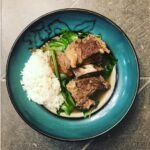Pandesal Recipe | Filipino Breakfast
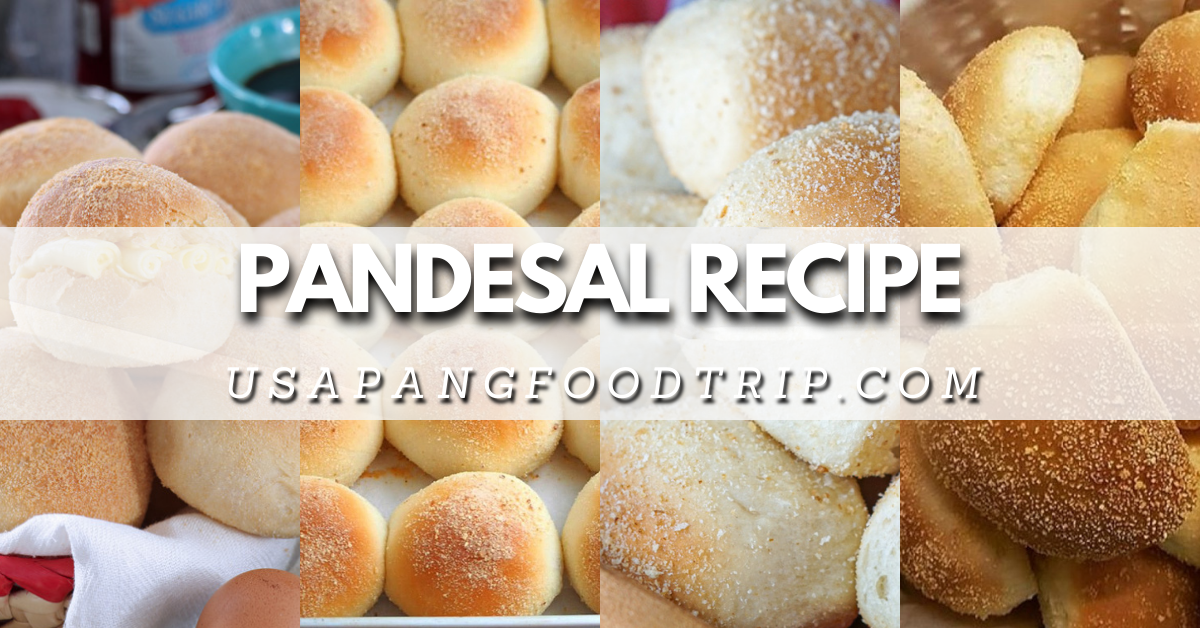
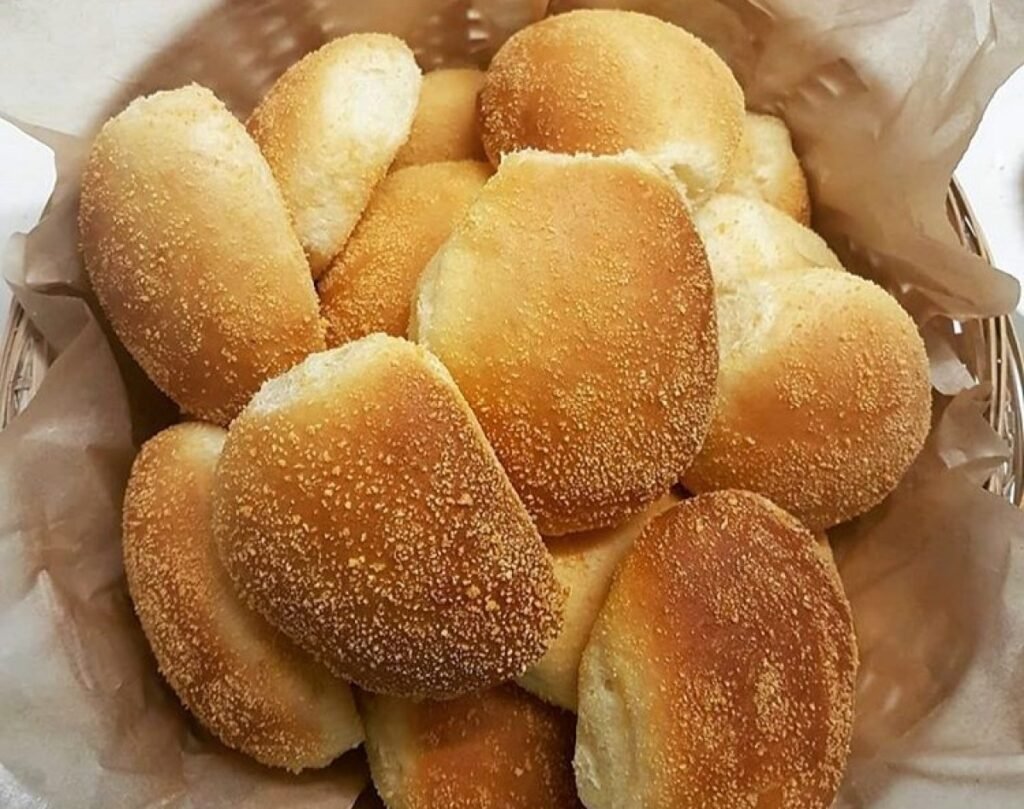
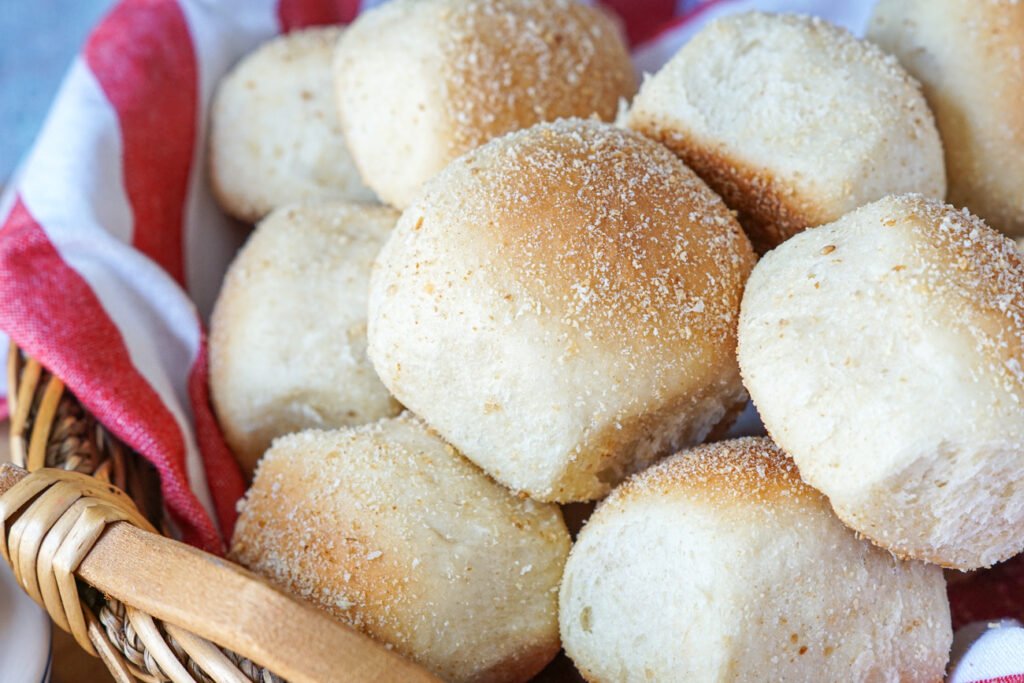

Pandesal recipe is a classic Filipino bread roll that is particularly eaten for breakfast. It is soft and airy and slightly sweet. Normally eaten as a sandwich with one’s favorite filling.
Pandesal is probably the most popular bread in the Philippines. It is a favorite breakfast that can be eaten on its own, dunked in coffee or with filling like coconut jam, peanut butter, cheese, cheese spread, corned beef, egg, hotdogs or practically anything you can think of or whatever leftovers you have laying in your fridge.
WHAT IS PANDESAL?
A traditional Filipino breakfast roll, that used to be sold only in early hours at bakeries or on the streets by vendors on bicycles with loud air horns. They would put the Pandesals in a big insulated box to keep them warm. But, nowadays, some bakeries make them available for the entire day.
It is called Pandesal or Pan de Sal (Spanish) that translates to salted bread although it is actually sweeter than salty. It is soft and fluffy and covered with breadcrumbs.
How to know if the bread dough has been adequately kneaded
- The dough turns from shaggy to smooth. It will lose its stickiness and will only be tacky to the touch.
- The dough is elastic. To test, take a little portion of the dough and stretch it out with your fingers. It should be thin and translucent in the center.
- The dough forms a dimple after you poke a finger in the surface then springs back up again.
A NOTE ABOUT FLOUR…
When I used the same pandesal recipe, the outcome is different. They taste great but were a little denser and dryer.
This is because of the flour used. The flour that I used in Germany is finer or “softer” which tends to absorb lesser liquid. The recipe (way) below is the original recipe I used for that. The flour I usually use in the Philippines is similar to the ones in the US, Gold Medal APF. This one requires more liquid so I adjusted the recipe here.
Remember—different types of flour has different flour-to-water ratio. The higher the protein/gluten content, the more water it needs. Also important to note, not all-purpose flour acts the same. Different brands have different ways of processing their flour and different contents.
If the dough feels too dry then simply add more water, or if too sticky then add flour. The dough should feel pliable or easy to knead and not too sticky.
You can also use bread flour if you are looking for a chewier pandesal. Mix them in equal parts to get a moderately chewy but softer ones. But remember that bread flour absorbs more liquids so you may need to adjust.
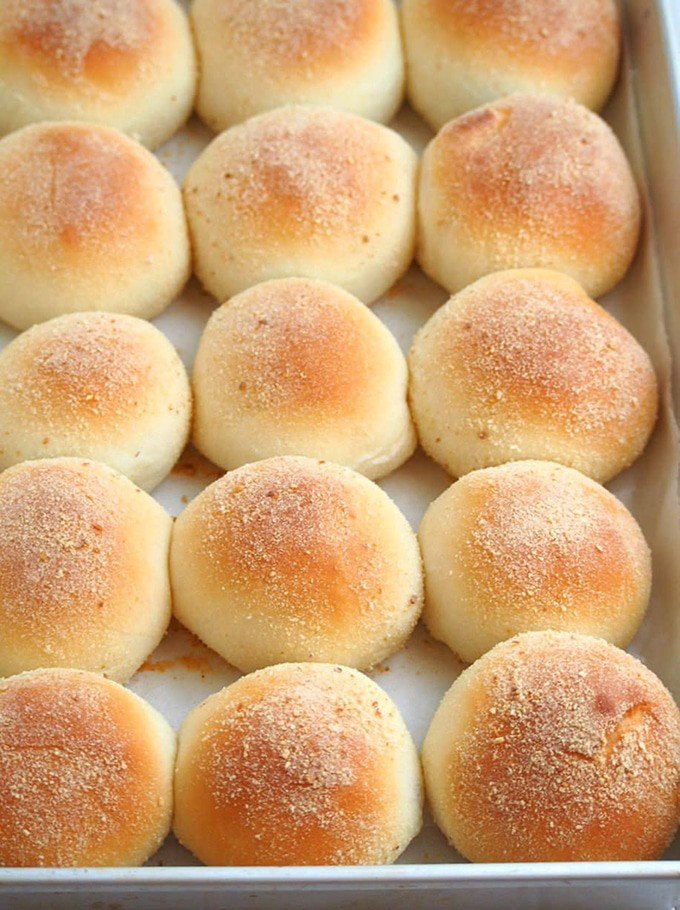
Pandesal Recipe
Ingredients
Method
- In a big bowl, mix together flour, sugar, salt.
- Pour in milk, beaten egg and melted butter. Mix several times until well blended. Make sure that the milk is only mildly warm and not hot.
- Add the instant dry yeast and fold until a sticky dough forms.
- Tip the dough on a floured surface and knead until it becomes smooth and elastic, about 5-10 minutes.
- Form the dough into a ball and lightly coat with oil. Place it in a bowl and cover with a kitchen towel or plastic wrap and place it in a warm area and let it rise until it doubled in size. Depending how warm it is, could take 30 minutes to an hour.
- Punch down the dough and divide into 2 equal parts using a knife or dough slicer. Roll each into a log. Cut each log into 6 smaller pieces.
- Shape each piece into a ball and roll it in breadcrumbs, completely covering all sides.
- Arrange the pieces on a baking sheet living some gaps in between (at least an inch). Leave them to rise second time until double in size.
- While waiting, preheat oven 370° F /185°C. Bake the Pandesal for 15 minutes or until the sides are a bit browned.
- Remove from oven and serve while hot!

